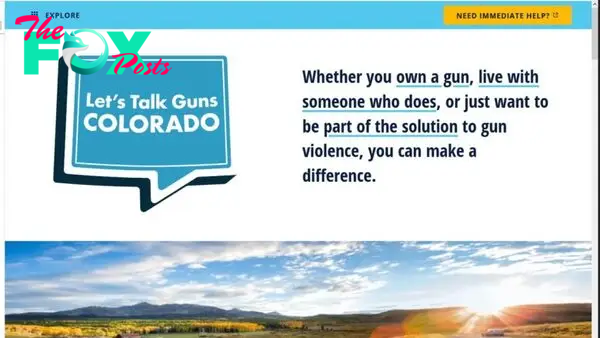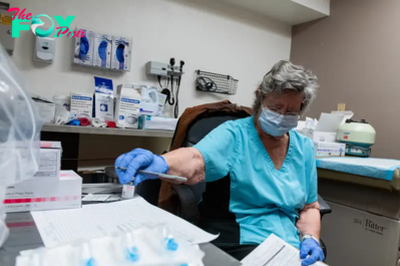Health
Gun-related injuries cost at least $8.4 million in medical bills in Colorado in 2022
Injuries related to firearms in Colorado racked up at least $8.4 million in medical bills in 2022, according to a recently released analysis.
The report, produced by the Center for Improving Value in Health Care, or CIVHC, is the first of its kind to examine some of the economic impacts of firearm injuries. But it is in keeping with a growing effort in Colorado to think of gun-related harms as a health issue and to study them in the same way researchers might look at other public health challenges.
“It’s an important way to look at things,” said Dr. Emmy Betz, the director of the Firearm Injury Prevention Initiative at the University of Colorado School of Medicine, who was not involved in the new study. “It helps people think about another aspect of this specifically beyond the deaths.”
☀️ READ MORE
100 hikes: A 5-year-old was diagnosed with leukemia. So she and her mother turned to outdoor therapy.
Colorado fentanyl deaths continue to rise. Here’s the DEA’s new approach to combat the problem.
Justice Department formally moves to reclassify marijuana as a less dangerous drug in historic shift
To conduct this analysis, CIVHC relied on a powerful tool — the state’s all-payer claims database, which has amassed anonymized data from more than a billion Colorado medical claims drawn from more than 5.5 million unique people.
In addition to the dollar amount, CIVHC also found some concerning trends within the data.
Between 2016 and 2022, the rate of medical claims for firearm-related injuries increased 53%. But it increased even more for injuries to kids: 120%.
Men were three times more likely than women to suffer firearm injuries. And rural counties generally have higher rates of injury than urban ones.
Kristin Paulson, CIVHC’s president and CEO, said in a statement that the analysis shows “the critical need for continued focus on comprehensive public health, education, and community-tailored initiatives aimed at addressing and preventing firearm violence.”
Many firearms injuries — particularly homicides and suicides — do not result in a medical claim for tragic reasons. So CIVHC’s analysis ended up weighted heavily toward an often less examined area: unintentional injuries. Of the more than 7,000 claims analyzed for 2022, 72% were coded for unintentional injuries. Next came assaults at 17%.
Betz said the analysis ultimately is a snapshot of just one slice of gun-related harms. But even still Betz said medical claims data can provide valuable insight into the issues underlying gun injuries.
“It raises concerns for me about what is happening in those homes and why firearms are maybe not being locked up in those homes,” she said.
That question can help identify where public health campaigns — such as the state’s Let’s Talk Guns, Colorado campaign, which promotes gun safety and safe storage — could have an impact.

The idea of treating guns and the potential negative consequences associated with them as a public health issue is gaining momentum in Colorado. (Experts in the field prefer the term firearm-related harms to the term gun violence because they believe the latter creates an impression that most injuries or deaths are due to assaults. Contrary to public perception, the large majority of firearm-related deaths in Colorado are suicides.)
Lawmakers in 2021 created the state Office of Gun Violence Prevention, which provides data on firearms issues in the state and gives grants to communities and organizations looking to tackle gun-related problems. CU’s Firearm Injury Prevention Initiative conducts research. And earlier this spring, a new program launched to try to better connect the pieces.
The Firearm-Related Harm and Violence Prevention Program Office, which is housed in the Trailhead Institute, hopes to work with organizations to help them examine gun-related issues in their communities and then apply for resources to address them.
“This is an opportunity to move past ideologies and rhetoric,” said Jonathan McMillan, the program office’s director.
McMillan, who formerly led the state’s Office of Gun Violence Prevention, was in Washington, D.C., last week for a meeting with the White House Office of Gun Violence Prevention and other local violence-prevention programs — showing that interest in tackling the health aspects of gun issues is not just a Colorado phenomenon.
He said the goal of the public health work is not to take away guns or criticize those who own and value them. Rather, he said, it’s to help communities identify areas of concern — it may be suicides in one community or interpersonal violence in another — and then to work with those communities on specific strategies to address the issues.
“It’s about helping communities speak more to what their needs are,” McMillan said.
-

 Health10h ago
Health10h agoThe Surprising Benefits of Talking Out Loud to Yourself
-

 Health11h ago
Health11h agoDoctor’s bills often come with sticker shock for patients − but health insurance could be reinvented to provide costs upfront
-

 Health1d ago
Health1d agoWhat an HPV Diagnosis Really Means
-

 Health1d ago
Health1d agoThere’s an E. Coli Outbreak in Organic Carrots
-

 Health2d ago
Health2d agoCOVID-19’s Surprising Effect on Cancer
-

 Health3d ago
Health3d agoWhat to Know About How Lupus Affects Weight
-

 Health6d ago
Health6d agoPeople Aren’t Sure About Having Kids. She Helps Them Decide
-

 Health6d ago
Health6d agoFYI: People Don’t Like When You Abbreviate Texts



























